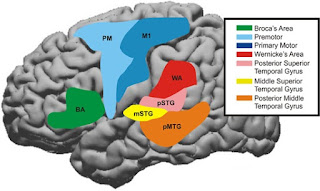Multiple Choice Questions - Parkinson's Disease
 |
Multiple Choice Questions - Parkinson's Disease |
The common cause of
chronic progressive parkinsonism is
·
Gene mutation
·
Toxins
·
Trauma
·
All of the above
------------------------------------
Answer: All of the above
The peak age of onset
for Parkinson’s Disease is in the following decade
·
Third
·
Fourth
·
Fifth
·
Sixth
------------------------------------
Answer: Sixth
Parkinson’s Disease is
more commonly seen among
·
Men
·
Women
----------------------------
Answer: Men
What is the usual blinking rate per minute in a human being?
·
12 to 20
·
15 to 25
·
18 to 28
·
21 to 31
--------------------------------
Answer: 12 to
20
What is the blinking rate per minute for a patient with
Parkinson’s Disease?
·
5 to 10
·
12 to 17
·
19 to 24
·
26 to 31
--------------------------------
Answer: 5 to
10
The characteristic tremor of Parkinson’s disease is described as
·
Alternating
·
Pill-rolling
·
Resting
·
All the above
------------------------------------
Answer: All
the above
Micrographia of Parkinson’s disease is
·
Hurried walking
·
Slowness of movement
·
Small handwriting
·
Soft speech
------------------------------------------
Answer: Small
handwriting
The characteristic tremor of Parkinson’s disease usually
involves
·
Arm
·
Eyelids
·
Hand
·
Jaw
·
Tongue
---------------------------------
Answer: Hand
Bradykinesia of Parkinson’s disease is
·
Hurried walking
·
Slowness of movement
·
Small handwriting
·
Soft speech
----------------------------------------------
Answer:
Slowness of movement
The part of the brain most affected in Parkinson’ Disease is
·
Corpus striatum
·
Putamen
·
Substantia nigra
·
Thalamus
--------------------------------------
Answer:
Substantia nigra
Eosinophilic cytoplasmic inclusions seen in the brain cells of a
patient with Parkinson’ Disease are
·
Golgi bodies
·
Lewy bodies
·
Paschen bodies
·
All of the above
-------------------------------------
Answer: Lewy
bodies
Which of the following genes are linked to Parkinson's Disease?
·
SNCA and PARK2
·
PARK2 and PARK7
·
PARK7 and PINK1
·
PINK1 and LRRK2
·
All of the above
-----------------------------------
Answers: All
of the above
Which of the following tests aid to determine the levels of
dopamine in the brain cells of a patient with Parkinson’s Disease ?
·
MRI
·
Olfactory testing
·
PET scan
·
Sonography
--------------------------------
Answer: PET
scan
Which is the drug of choice for the symptomatic treatment of
Parkinson's Disease?
·
Amantadine
·
Anticholinergic
·
Dopamine
·
Levodopa
------------------------------
Answer:
Levodopa


